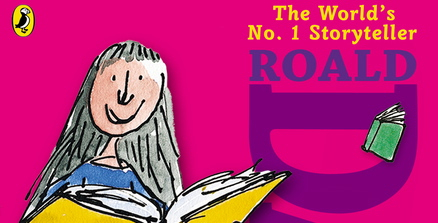By Elizabeth Eckhart, for The Children’s Book Review
Published: September 24, 2013
September is the month of Roald Dahl’s birthday, and the official “Roald Dahl Day” took place on September 13th! Dahl’s work is so cherished, and so popular, that much of it has been adapted for the big screen, while schools and libraries across the country still celebrate the month of September with special readings and viewings, despite the author’s passing in 1990.
Even with the ability to enjoy visually stunning film adaptations of much of his work, and the recent revival of many of Dahl’s creations, it’s important to recall not just Dahl’s ludicrous stories and plot twists, but also the wonderful fun of his unique writing style. Reading back through Dahl’s works now we can see the morals found in his writings are still poignant, despite the absurdity of his tales. Any of Dahl’s novels or the films they inspired are worth revisiting, but some of Dahl’s works stand out even from each other, and for still others, the visual medium will never do them proper justice.
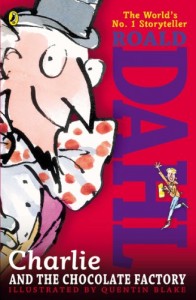 Charlie and the Chocolate Factory
Charlie and the Chocolate Factory
In 1929 Dahl began attending the preparatory school Repton in Derbyshire, England. During this time the chocolate company Cadbury would occasionally send boxes of new chocolates and candies over to the school so that they could be “tested” by the students, which of course led to Dahl dreaming of inventing a new kind of chocolate bar, and inspired his novel Charlie and the Chocolate Factory.
The first film adaptation of Charlie greatly disappointed Dahl, despite being a fan favorite in later years. Gene Wilder, for many, epitomizes the manic, unreliable Willy Wonka Dahl had created through his writing. However, Dahl believed that comedian Spike Milligan would have done the film more justice.
Liz Attenborough, of the Roald Dahl Museum and Story Centre in Buckinghamshire, told the BBC, “He thought it placed too much emphasis on Willy Wonka and not enough on Charlie. For him the book was about Charlie.”
The first film also deviated from the original book’s storyline, which frustrated Dahl to no end. His wife Felicity asked, “What makes Hollywood think children want the endings changed for a film, when they accept it in a book?”
After Felicity became the protector of Dahl’s literary legacy, she began searching for a director in order to redeem Chocolate Factory. She decided on Tim Burton, who was determined to return the film to it’s original dark tone. “I don’t want to crush people’s childhood dreams, but the original film is sappy,” said Burton. It’s likely that Roald Dahl would have delighted in the more adult version of his often gruesome book.
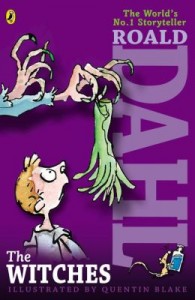 The Witches
The Witches
The plot of The Witches is fantastically evil—witches plot to take over the sweet shops in London, sell doctored candy to children which will turn them into mice, simply because to witches, children are quite smelly. Our narrator, unfortunately, becomes a victim of the children-to-mice scheme. In the movie, unlike the novel where the speaker remains anonymous, this narrator is given the name Luke. Minor changes aside, one of the most disappointing discrepancies on Hollywood’s side was the decision to have Luke/the narrator returned to his original boy form.
It’s difficult to argue with a happy ending, but it shows Roald Dahl’s skill as a writer that so many readers prefer the less idyllic ending in the book over the film’s version. In the novel, the young boy remains a mouse, yet still continues on his mission to rid the world of the evil witches. Surprisingly, the boy is hardly upset about his furry form: when probed about his feelings regarding his new status as a mouse, he replies insightfully:
“‘I don’t mind at all,’ I said. ‘It doesn’t matter who you are or what you look like as long as somebody loves you.’”
The Witches, then, transforms from a quirky tale about a boy being turned into a mouse into one about the strength of family and the importance of loved ones supporting each other no matter what befalls them, a point which hardly carries over into the film.
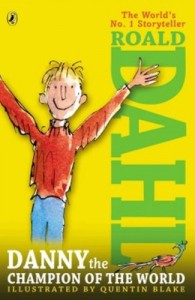 Danny, Champion of the World
Danny, Champion of the World
Neither children nor adults may fully comprehend the beauty and keen teachings of this story, at least not with their first read-through. Luckily for everyone, the tale of Danny, a young English boy, and his father, William, is so well-written and exciting that it will hardly be a chore for parents or children to read Danny, Champion of the World multiple times.
Considered one of the better Roald Dahl adaptations, the 1989 made-for-TV movie is fun and carries over the main messages of the novel, but fails to perfectly capture the timelessness of a simple, and authentic existence in an English post—war rural setting. The film remains faithful to Roald Dahl’s original plot, but, as many adaptations have shown, it’s difficult to recreate the magical moments Dahl presented in the novel. If you have yet to read Dahl’s hilarious description of the awakening of dozens of pheasants who have been drugged I’ll refrain from spoiling it, but it is one of Roald Dahl’s most memorable scenes as a writer.
There is also the remarkable defining of an eye-smiler:
“I was glad my father was an eye-smiler. It meant he never gave me a fake smile because it’s impossible to make your eyes twinkle if you aren’t feeling twinkly yourself.”
The respect the admiration Danny holds for William, and the family’s unbreakable bond puts every previous and following parent-child novel to shame.
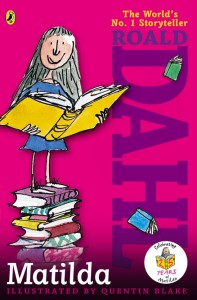 Matilda
Matilda
Matilda is still one of the most popular Roald Dahl creations, even after 25 years in print! Dahl created a character that many little girls could inspire to be, one who is intelligent, in love with books, and kind to her teacher
The film version, starring Danny Devito and Mara Wilson, was well received but lost much of the magic the novel held. In the book, Matilda only uses her powers a total of three times, and those times are of absolute necessity. The movie abuses this notion, having Matilda use her powers on a whim, most likely to show the newly available special effects. Then, in the novel, once the need for Matilda’s powers has dissipated (because she has finally found proper channels for her intelligence), the powers, too, disappear. The film version, however, ends with Matilda still in control of her telekinesis. It may appear to be a minor change, like The Witches, but similarly affects the overall message of the story. Matilda didn’t need her powers to be happy—she only wanted the love of a family and an escape from the horrible parents who (gasp!) hated reading.
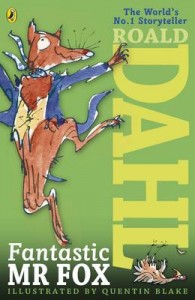 Fantastic Mr. Fox
Fantastic Mr. Fox
The film version of Fantastic Mr. Fox is perhaps one of the best film adaptations of Dahl’s work yet created. In an interview with The Guardian, Roald Dahl’s widow Felicity discusses how Wes Anderson took extra pains to recreate the novel, staying in Dahl’s actual home in order to ensure he had the proper feel for the script. In the novel, Mr. Fox, intent on outsmarting the farmers attempting to kill him, devises a plan to tunnel into the hen-house. The film version was created using Wes Anderson’s visually groundbreaking style of stop-motion and stays true to Dahl’s vision. Wes chose to add some scenes, much preferred over cutting scenes out. Casting George Clooney and Meryl Streep as the lead voices didn’t hurt either.
The book is littered with spontaneous drawings, which seemed to have provided a good base for Wes to create his animated characters. On top of that, Mr. Fox’s ingenuity saves a plethora of animals from starving, and the moral implications of his acts won’t be lost on children.
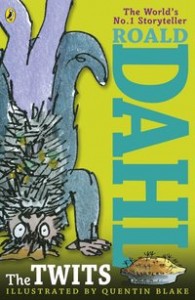 The Twits
The Twits
The Twits is one of the few popular Dahl books that has yet to be made into a major motion picture, and perhaps it’s best that way. Dahl, who hated beards, wrote this story to express his hatred of face fuzz, creating a very hairy, very grouchy, ever-warring married couple. Mr. Twit has a glass-eyed wife and a repulsive beard from which he sometimes picks out and eats weeks-old food.
Roald Dahl’s evil characters are almost always hideously ugly and unpleasant, but this novel offers an explanation of what Dahl considers the true source of beauty:
“A person who has good thoughts cannot ever be ugly. You can have a wonky nose and a crooked mouth and a double chin and stick-out teeth, but if you have good thoughts it will shine out of your face like sunbeams and you will always look lovely.”
This quote alone makes the story an important one for children if only to help them understand that goodness is more valuable than physical beauty. The Twits is one of many works that would be unable to flourish on screen, since it is much shorter than some of Dahl’s full length novels, and depends so greatly on Dahl’s flamboyant writing style. Other similar stories, The Giraffe, The Pelly and Me for instance, would be best left as stories read aloud before bed.
About the Contributor: Elizabeth Eckhart is an entertainment and movie blogger with an admiration for Roald Dahl.

